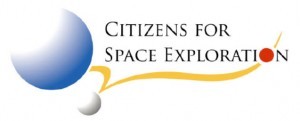Space Budgets, Policy, Missions, Benefits, International Updates
Asteroid Redirect Mission: NASA provides update on Asteroid Redirect Mission While the U.S. Congress doubts the value of NASA’s Asteroid Redirect Mission, some policymakers and planners remain steadfast to the contributions it could make to human deep space exploration, science and fending off near-Earth asteroids with the potential to impact the Earth. ARM would visit an asteroid, robotically extract a boulder and maneuver the big rock into orbit around the moon. Astronauts launched in an Orion spacecraft atop a Space Launch System rocket would visit the boulder and gather samples for return to Earth.
Exploring Mars: Path to Mars Should Be Flexible, Experts Agree In remarks before a recent AIAA gathering in Long Beach, Calif., Bill Gerstenmaier, NASA’s associate administrator for Human Exploration and Operations, and others involved in the planning, called for flexibility in the space agency’s efforts to reach the Martian environs with humans. The flexibility will enable them to best deal with health risks, establish the best propulsion strategies and overcome other obstacles, said Gerstenmaier and others involved in a panel discussion. (See also: How We Can Finally Get to Mars and The best reason to go to Mars)
Red Mars Initiative: NASA to have limited role in SpaceX’s planned Mars campaign NASA intends to serve as a consultant to SpaceX’s ambitious “Red Mars” initiative, a private sector attempt to land an unmanned spacecraft on the Martian surface as soon as 2018. In return, NASA hopes for data on supersonic retro propulsion, a technique for slowing a spacecraft as it enters the Martian atmosphere ahead of the descent and landing phases. NASA hopes to use supersonic retropropulsion to land U.S. explorers on Mars in the future.
China’s Space Program: Chinese space station sighted China’s Tiangong-2 Earth-orbiting space lab has been sighted by ground observers. China plans to launch astronauts to the orbiting science lab next month. (See also: China’s race to space domination and China Exclusive: China to begin building space station in 2017: chief engineer)
Blue Origin Rocket: Jeff Bezos unveils details of new Blue Origin rocket Blue Origin’s New Glenn rocket, named in tribute to the first American to orbit the Earth, Mercury astronaut John Glenn, will feature two and three stage versions powered by natural gas and liquid oxygen fueled rocket engines, the BE-4. Both version are intended to boost humans as well as payloads on orbital missions. (See also: Why Bezos’ rocket is unprecedented and worth taking seriously)
Mars Exhibit at KSC Visitors Complex: Moon-walker Aldrin hopes exhibit will inspire future on Mars Destination Mars, a new exhibit at the Kennedy SpaceCenter Visitor Complex in Central Florida, opens to the public. Apollo 11’s Buzz Aldrin joined a preview this weekend to express his support for the exhibit developed with help from Microsoft and NASA’s Jet Propulsion Laboratory. The exhibit includes Martian vistas obtained by NASA’s Curiosity rover.
Citizens for Space Exploration – a pro-space, taxpayer, grassroots advocacy group  (http://www.bayareahouston.com/content/c_s_e/c_s_e) – has traveled to Washington, D.C. the past 24 years to meet face-to-face with Members/staff of Congress to discuss the value of America’s investment in space exploration. In order to sustain that dialogue on a regular basis, Citizens distributes “Space Exploration Update” to Congressional offices on a weekly basis. The intent is to provide an easy, quick way to stay abreast of key human space exploration program and policy developments.
(http://www.bayareahouston.com/content/c_s_e/c_s_e) – has traveled to Washington, D.C. the past 24 years to meet face-to-face with Members/staff of Congress to discuss the value of America’s investment in space exploration. In order to sustain that dialogue on a regular basis, Citizens distributes “Space Exploration Update” to Congressional offices on a weekly basis. The intent is to provide an easy, quick way to stay abreast of key human space exploration program and policy developments.







